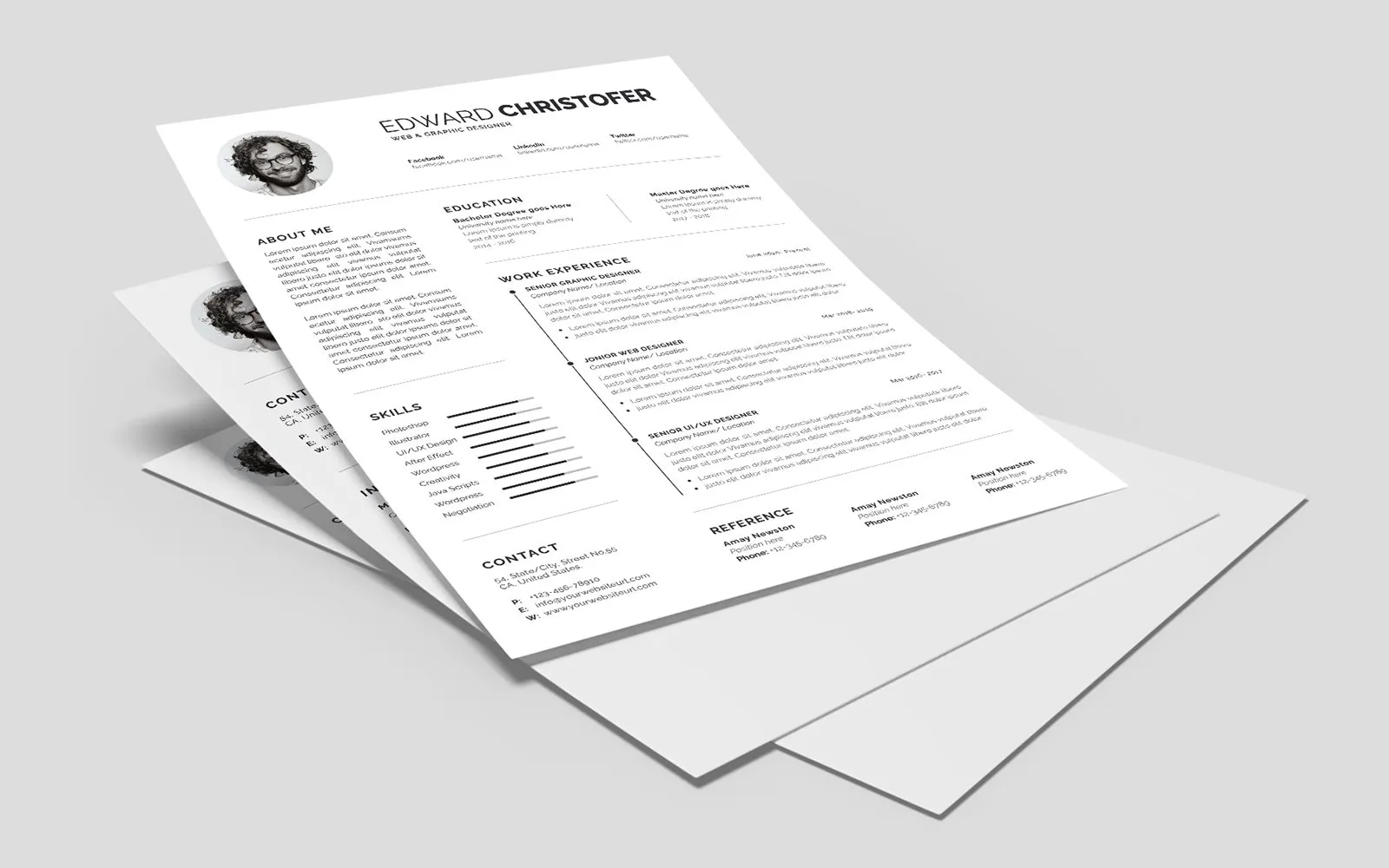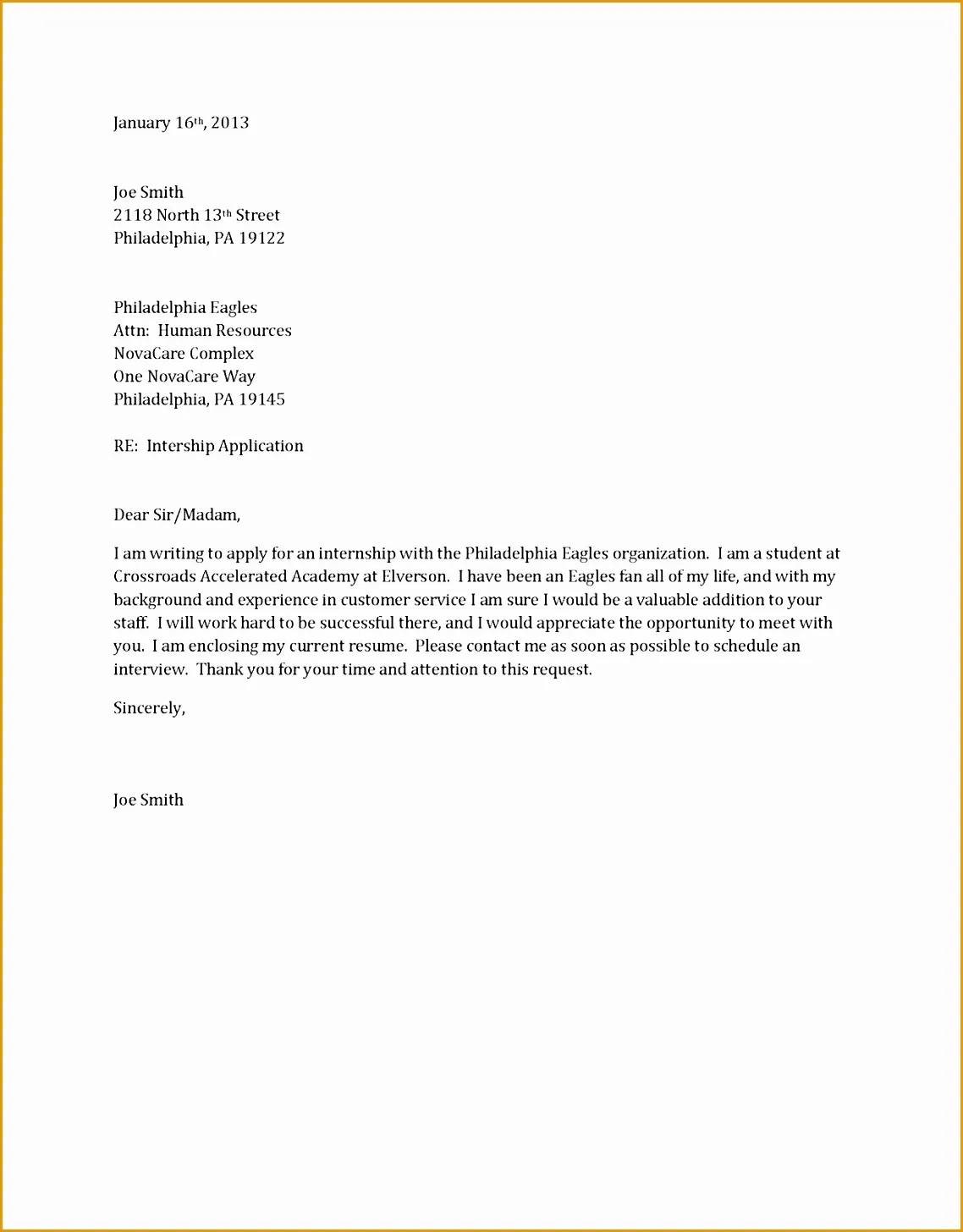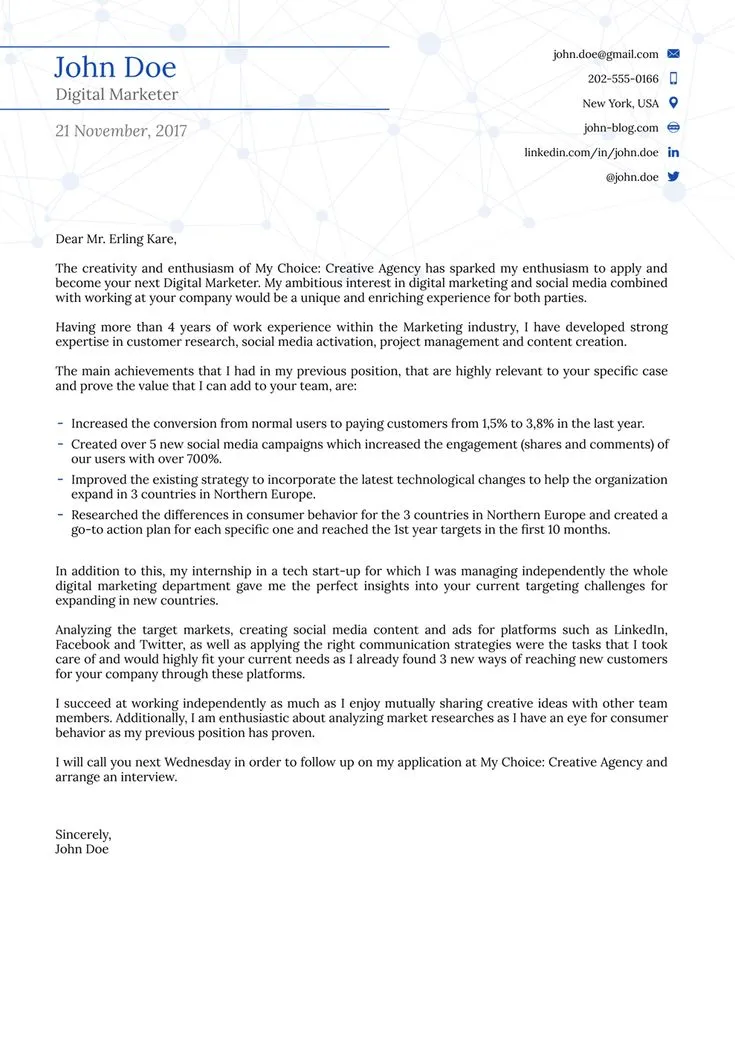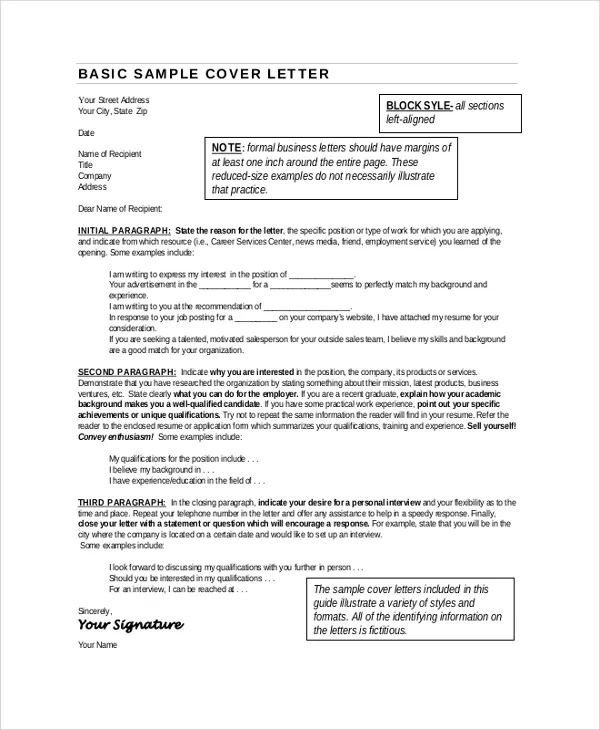The Importance of a Resume Cover Letter
In today’s competitive job market, a well-formatted resume cover letter is no longer optional it is essential. Think of it as your first handshake with a potential employer. This document provides an opportunity to go beyond the bullet points of your resume and demonstrate your personality, enthusiasm, and suitability for the role. It allows you to tell your story, connect your skills and experiences directly to the job requirements, and showcase your understanding of the company’s needs. A compelling cover letter immediately sets you apart from other candidates, creating a memorable first impression that significantly increases your chances of landing an interview. Neglecting a cover letter means missing a critical opportunity to make a strong impact and to present a case for why you are the ideal candidate.
Key Formatting Elements for Your Cover Letter
The format of your cover letter is as important as its content. A well-formatted cover letter is easy to read, visually appealing, and reflects your attention to detail. Start with a professional heading, including your contact information, the date, and the employer’s contact details. Use a clear, easy-to-read font like Arial, Calibri, or Times New Roman, with a font size between 10 and 12 points. Maintain consistent margins (typically 1 inch on all sides) and single-space the text within paragraphs, with a double space between paragraphs. The overall layout should be clean and uncluttered, allowing the hiring manager to quickly scan the document and grasp the key points. These formatting choices demonstrate professionalism and make the letter more accessible and engaging.
Contact Information and Professionalism

Your contact information should be at the top, aligned left or centered. Include your full name, phone number, email address, and LinkedIn profile URL (optional but highly recommended). Ensure your email address is professional-sounding; avoid using nicknames or informal addresses. Below your contact information, include the date, followed by the hiring manager’s name and title (if known), and the company’s address. Maintain a formal and professional tone throughout the letter, as this is a reflection of your character. Proofread carefully to eliminate any errors in grammar or spelling, as these small details speak volumes about your attention to detail and commitment to quality.
Proper salutation
Start your cover letter with a professional salutation. The most effective approach is to address the hiring manager by name (e.g., “Dear Mr. Smith”). If you are unable to find the hiring manager’s name, use “Dear Hiring Manager” or “Dear [Company Name] Hiring Team.” Avoid generic greetings such as “To Whom It May Concern,” as they often feel impersonal. A personalized salutation shows that you’ve done your research and are genuinely interested in the opportunity. Always double-check the spelling of the recipient’s name, as a simple error can make a negative first impression. If you are unsure about the gender or preferred title, using the full name is always a safe option.
Body Paragraph Structure
The body of your cover letter should be structured into three to four concise paragraphs. Begin with an engaging introduction that states the position you’re applying for and how you learned about the opportunity. The following paragraphs should highlight your relevant skills and experiences, providing specific examples that demonstrate how you meet the job requirements. Use the STAR method (Situation, Task, Action, Result) to describe your accomplishments and quantify your achievements whenever possible. Conclude with a strong closing statement that reiterates your interest in the role and expresses your eagerness to discuss your qualifications further. Each paragraph should be focused, well-written, and directly relevant to the job description.
Highlighting Relevant Skills and Experience

Your cover letter is an opportunity to showcase how your skills and experiences align with the job requirements. Carefully review the job description and identify the key skills and qualifications the employer is seeking. In your cover letter, provide specific examples of how you have demonstrated these skills in past roles or projects. Use action verbs to describe your accomplishments and quantify your results whenever possible (e.g., “Increased sales by 15%,” “Managed a team of 10 employees”). Tailor your examples to the specific requirements of the job, emphasizing the most relevant aspects of your experience. This targeted approach demonstrates your understanding of the role and how you can contribute to the company’s success.
Tailoring Your Cover Letter to the Job
Generic cover letters are easily identified and often discarded. The most effective cover letters are tailored to each specific job application. Before you start writing, carefully read the job description and research the company. Identify the key skills, experiences, and values the employer is seeking. In your cover letter, address these points directly, highlighting how your qualifications align with their needs. Avoid simply restating your resume. Instead, provide specific examples that demonstrate your understanding of the role and how you can contribute to the company’s goals. Customizing your cover letter shows that you are genuinely interested in the position and have taken the time to understand the company’s needs.
Using Keywords Effectively
To increase your chances of getting noticed, incorporate keywords from the job description into your cover letter. Many companies use Applicant Tracking Systems (ATS) to scan resumes and cover letters for relevant keywords. By strategically including these keywords, you can help your application pass through the initial screening process. However, avoid keyword stuffing, which can make your letter sound unnatural and detract from its readability. Instead, weave keywords naturally into your sentences, highlighting your skills and experiences in a clear and concise manner. Focus on using relevant keywords that accurately reflect your qualifications and the job requirements.
Quantifying Achievements with Numbers

Quantifying your achievements is a powerful way to demonstrate your value to potential employers. Whenever possible, use numbers to provide concrete evidence of your accomplishments. For example, instead of saying “Improved customer satisfaction,” say “Improved customer satisfaction by 20% through implementing a new feedback system.” Quantifying your achievements makes your accomplishments more tangible and allows employers to easily understand your impact. Use percentages, dollar amounts, time frames, or any other measurable data to illustrate the results you’ve achieved. This data-driven approach makes your cover letter more compelling and gives the hiring manager a clear picture of your capabilities.
Strong Closing Statements
End your cover letter with a strong closing statement that reinforces your interest in the role and encourages the hiring manager to take action. Reiterate your enthusiasm for the opportunity and briefly summarize your key qualifications. Express your confidence that your skills and experience align with the job requirements. Include a clear call to action, such as “I am eager to discuss my qualifications further and can be reached at [phone number] or [email address].” or “Thank you for considering my application. I look forward to the opportunity to speak with you soon.” Avoid generic phrases like “Thank you for your time” or “I look forward to hearing from you.” The closing statement should be proactive, professional, and leave a lasting positive impression.
Proofreading and Editing
Proofreading and editing your cover letter is critical to ensure it is free of errors and reflects your attention to detail. Before submitting your application, carefully review your cover letter for any grammatical errors, spelling mistakes, and typos. Read the letter aloud to catch awkward phrasing or unclear sentences. Ask a friend, family member, or career advisor to review your cover letter for feedback. Consider using online grammar and spell-check tools, but remember that these tools are not foolproof. Pay particular attention to the details, as errors can undermine your credibility and negatively impact your chances of getting an interview. A polished and error-free cover letter demonstrates your professionalism and commitment to excellence.
Formatting for Different Platforms

Consider how your cover letter will be viewed on different platforms when formatting. If submitting your cover letter online, save it as a PDF to preserve the formatting and ensure it is readable on various devices. If submitting by email, include your cover letter in the body of the email and attach a PDF version. Be mindful of the display on mobile devices; avoid complex formatting that might make the letter difficult to read on a small screen. When possible, review your cover letter on different devices to ensure the formatting remains consistent and the document is visually appealing. Ensuring your cover letter looks great on any platform demonstrates your adaptability and attention to detail.
